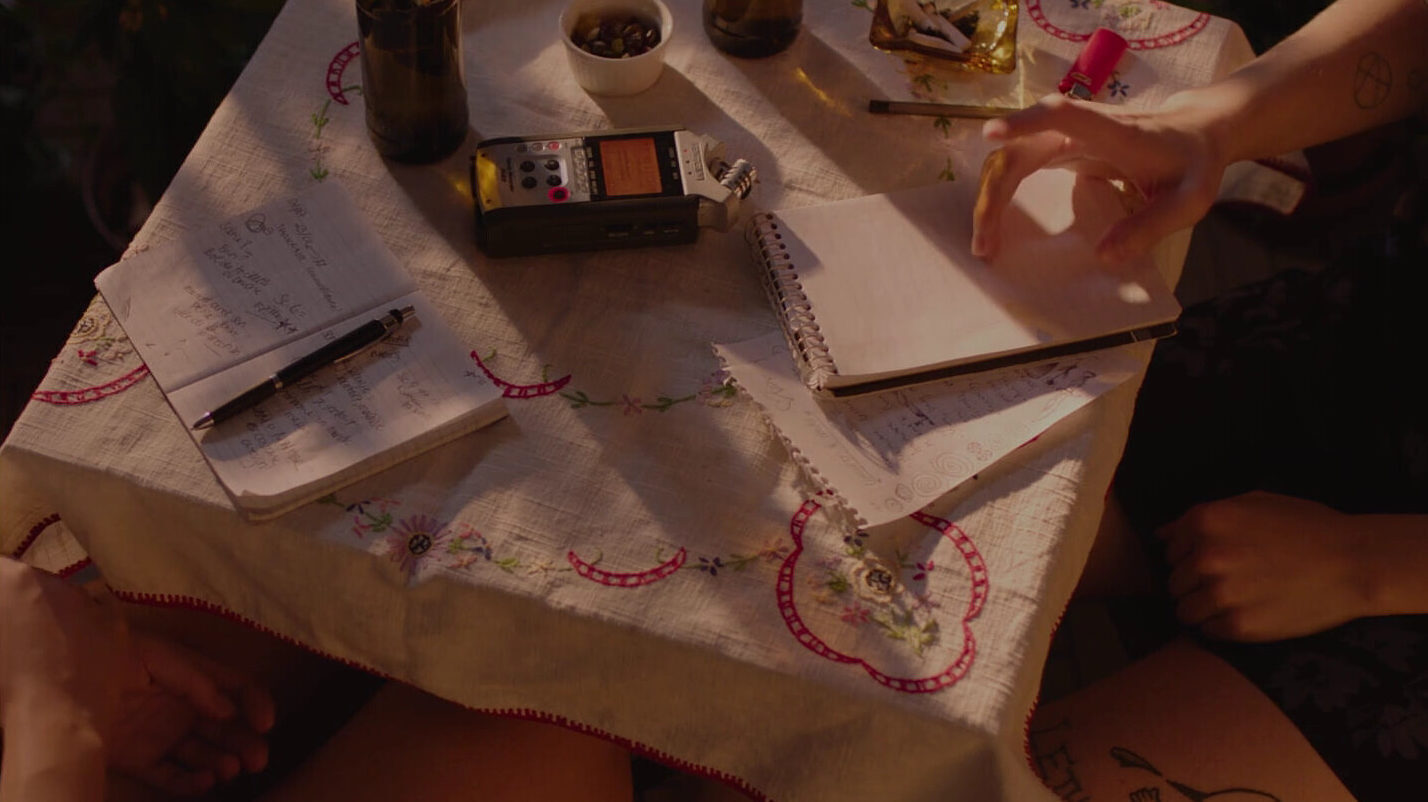I think we all trust the images we are shown a lot less than we used to. It seems impossible not to after the promises of the information age metastasised into mediums of uninterpretable scale and mass deception. The idea that there is some concrete, collective truth has been shattered into tiny pieces. And so it’s only natural that these six shorts, each a shard of this broken mirror, obscure, or perhaps reveal the obscurity of, the line between documentary and fiction.
We Did Not Consent starts with a dramatised scene: a woman, an activist, is about to do something big, something bold, while her boyfriend sits beside her, supportive and mild. But then the moment is broken. It didn’t happen that way, say three women sitting behind the camera, their faces anonymised by animal masks, he was much more forceful. In trying to recreate the relationships they were manipulated into by undercover cops—for one, it was their first ever relationship—they must cut through the cliches of narrative filmmaking. It’s almost comic how often they interrupt a scene to correct it.
Many of these films reveal the act of production. We hear directors from behind the camera, they talk about the shots they’re trying to get and they talk to their (so-called) subjects; they tell them where to stand. We hear audio glitching out and camera angles being set up. We see choices being made. We see narratives being constructed.
This acknowledgement and embrace of artifice is something that We Did Not Consent posits as more truthful. Not just in capturing this specific moment of deception, but in reflecting a society poisoned with compromise and mixed intentions. We learn some of the officers insisted that their romantic feelings were, in some sense, genuine. Everything, then, is a kind of deception, whether to others or to ourselves.
Parc Chwiad sees this in a more positive and universal light. A local historian, Clynnog Morris, tries to revive a forgotten park in North Wales, shot in beautiful earthy browns and greens, by filling it with stories and fables. A place only really exists at the intersection of fictions, otherwise it’s just a bunch of meaningless wood. Whereas Papillon finds darkness in mythologising. An escaped bear becomes a symbol of freedom and a h(a)unting spectre, without ever being seen. A narrative force that is structuring, controlling, but ultimately elusive; beyond reach.
But to reveal that, and then to harness it through the perspective of someone seldom heard is a way to weaken that narrative control, to pour light through it. In Hello Stranger Cooper tells her story of gender transition looking straight into the camera, controlling its gaze, while sitting in a laundromat, because—as we hear discussed between her and director Amélie Hardy—it’s as if she’s talking it directly to the people who would stare at her in a public place like this. It’s confrontational, but within a safe space where one can think beyond the usual limitations of the normal, suffocating ‘reality’ that has been built around us.
But other films are less optimistic. In Street Light, a charismatic traffic warden is reprimanded by a cartoonish bureaucrat—acting like the character in a children’s movie who is trying to shut down the theatre to build a parking lot—for being too friendly and talkative, essentially, for bringing a bit of joy into his grey world. This leads Cheun, defeated and demoralised, to quit his job and the film. The director, Roman Dumont (though played by Victor Bonnel) tries to make the film work with what he’s got, but realises he can’t, or that it doesn't matter. When he finds Cheun again on a rooftop, like the superheroes he is frequently compared to, he tells him he doesn’t care about the film and just wants him to know how incredible he is.
It’s a lovely moment, but one complicated in the context of this programme. We have consistently been pointed towards the ways in which these moments are contrived. Sure, Roman has turned the camera away from Cheun, but he is still filming. He is showing that he doesn’t care about the film for the purposes of the film. Over the credits we see the two of them messing around with the camera, free of purpose, but in the previous scene when someone on the street recognises Cheun and asks what he’s doing for work now, he quips that he’s in the film industry. It doesn’t seem like he’s found anything else. We are left to wonder what liberation being shot like a superhero, or being shot for a film at all, can really bring,
Phillips is less hopeful still about the possibilities of documentary, and more openly sceptical of its compromises. In a small neighbourhood in the shadow of a refinery, as grey and obscured as its polluted tap water, filmmaker Max Drexler discovers Troy, a shy teenager boy with a beautiful head of curly hair hidden under a black logoless baseball cap. Behind his back Drexler calls him an “interesting character” and later tries to convince him of the value of the film by showing him how “cinematic” it looks. Self-critical and self-parodying, Drexler makes the whole exercise seem stupid and false. When the credits reveal that Troy is played by an actor, it hardly makes a difference. What person in a documentary isn’t turned into a fictional character?
Across these six films the consistent allusion to the nature of their own construction, however, doesn’t flatten everything in the way that the fictionalised version of Drexler does. Because, by making that process part of, if not the story itself, they reveal the complexities of turning something real into a story and the friction of imposing intention on reality; they always gesture to something beyond themselves. Rather than creating something perfect and hermetic they are openly incomplete and expansive. At points it’s almost like we can see beyond the borders of the frame.
